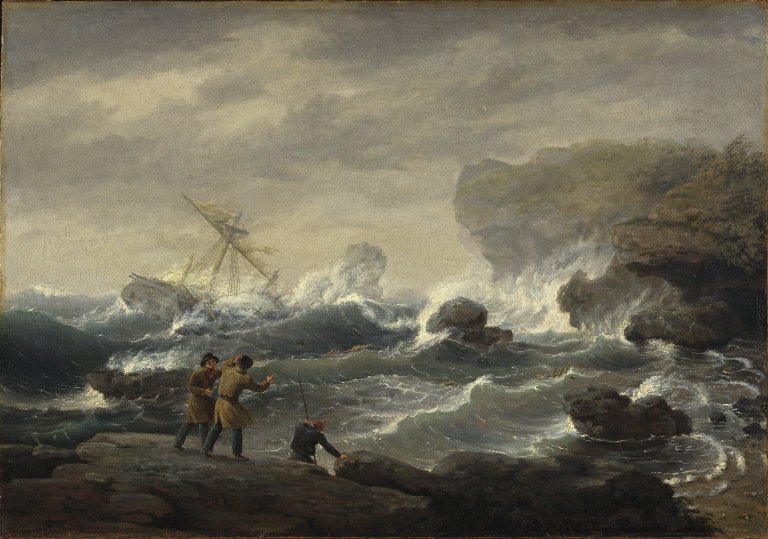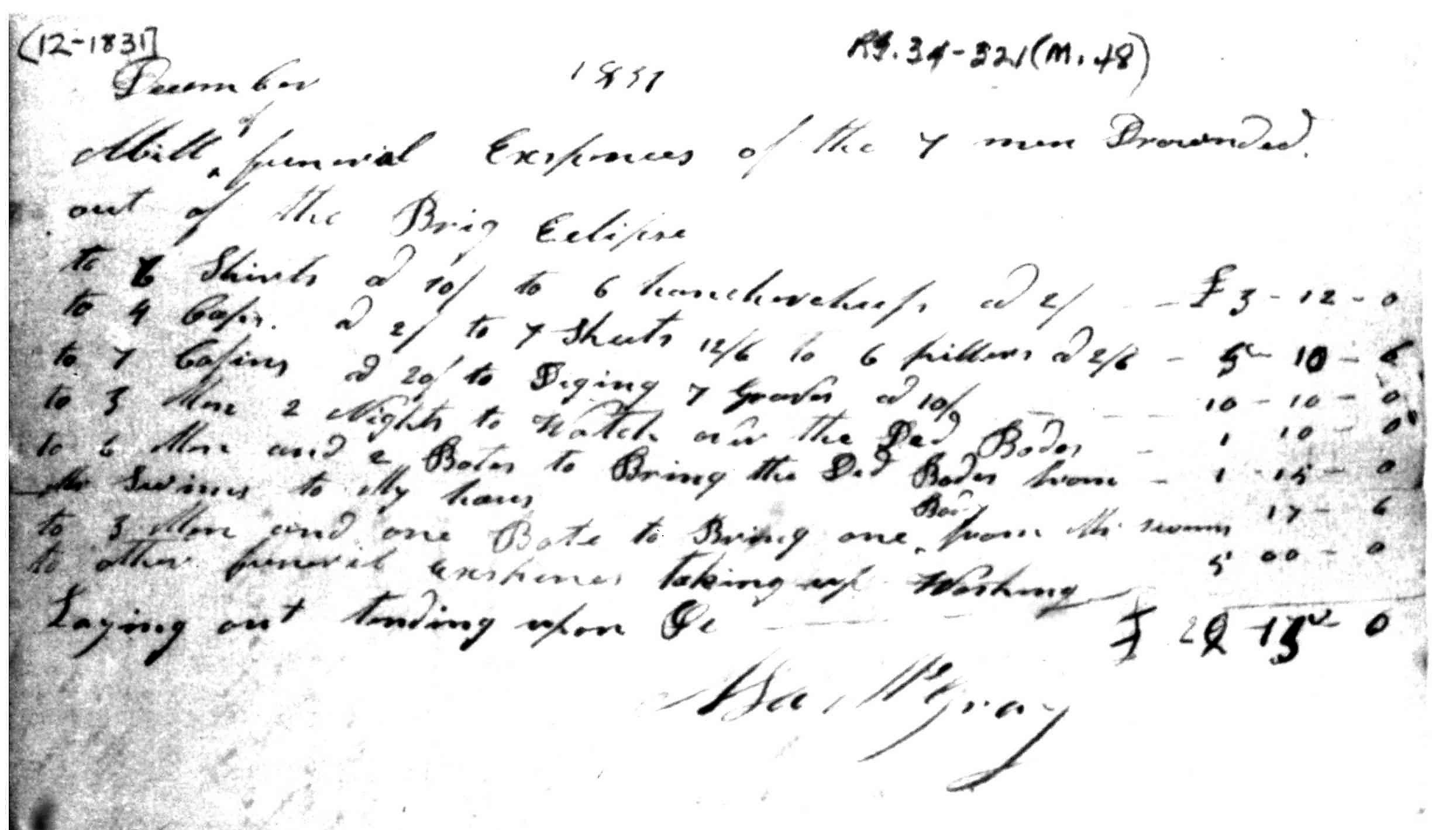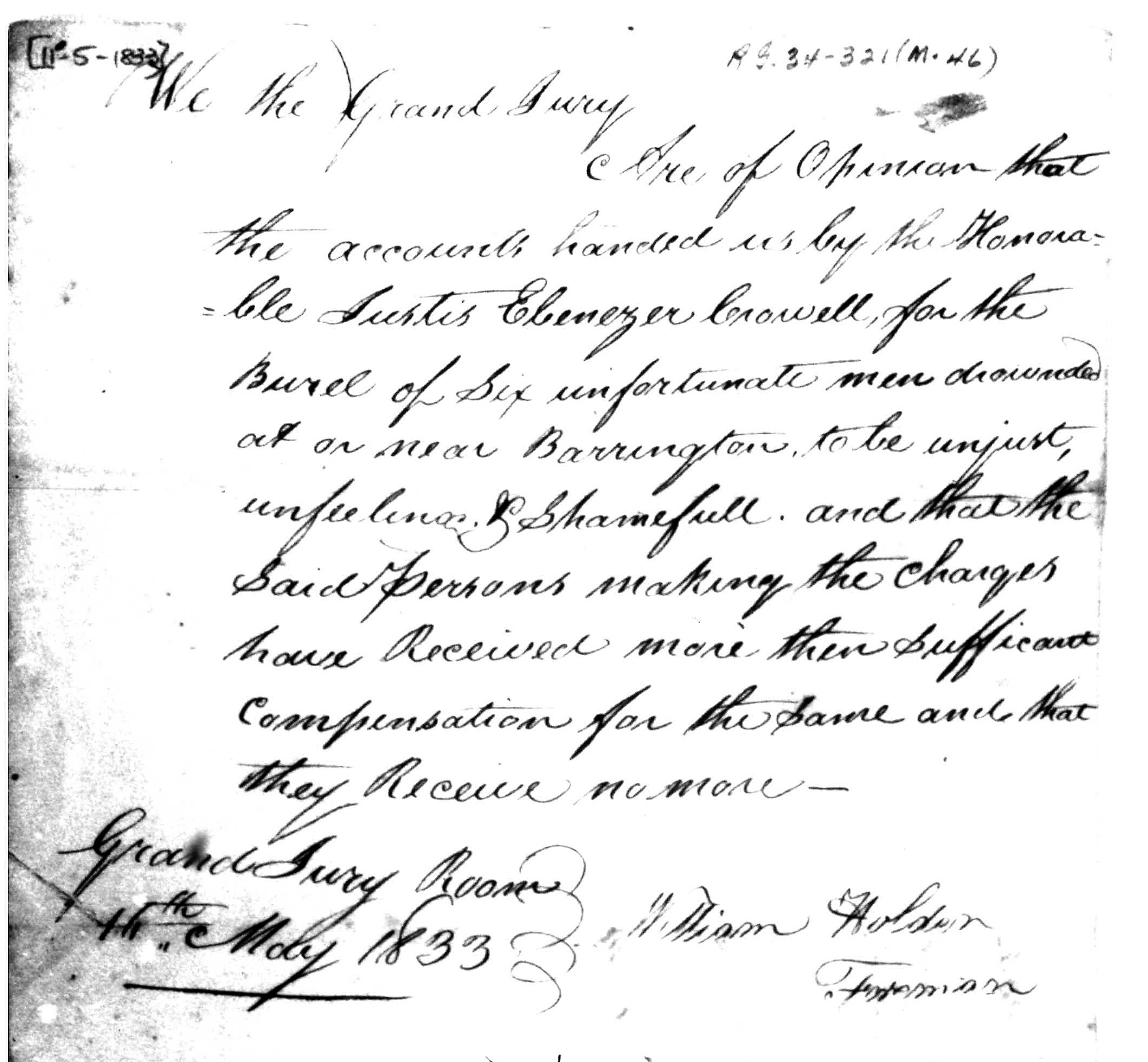- Submitted on
- 0 comments
At the head of Cape Sable, Nova Scotia, in 1831, the end came for seven sailors belonging to the brig Eclipse like many others employed in this potentially lethal occupation. The story of the crew of the Eclipse is just one of the dramas that is revealed through common, local county court documents. The primary documents assembled below demonstrate the very practical concerns surrounding shipwreck deaths and the treatment of its victims.

Shipwrecks were a regular part of life and death in the coastal communities of the Atlantic Provinces for generations. Drowning was a very common form of accidental death, and can readily be found amongst church records, such as in Cornwallis, Nova Scotia. While creating a finding aid for the Records of the Nova Scotia Court of Quarter Sessions of the Peace for Shelburne County, a series of documents was revealed which outline a tragic sequence of events, humanizing the maritime past of the Atlantic World in detail.
The Eclipse had been stranded during a voyage from New York near Green Island and the Head of Cape Sable in late November, 1831. The crew were buried by December, attended to by locals. The issue of reimbursement for burial expenses did not come to the attention of the Court of General Quarter Sessions of the Peace of Shelburne County until May 1833, a year and a half after the event. The initial bill incurred in the care of the drowned men was presented to the Grand Jury at that time:

Court of General Quarter Sessions of the Peace, Shelburne County. Records: 1784-1880. (Nova Scotia Archives, File 6, Series M, # 48)
6 Shirts @ 10/, 6 hanchercheifs @ 2/
4 Caps @ 2/, 7 sheets 12/6, 6 pillows @ 2/6
7 Cofins @ 20/, Diging 7 Graves @ 10
3 Men 2 Nights to Watch over the Ded Bodes
6 Men and 2 Botes to Bring the Ded Bodes from Mr. Swims to My hous
3 Men and one Bote to Bring one Body from [Mr. Swims]
other funeral expencs taking up Washing
Laying out tending upon etc.
£2[5].15.0 [note: pounds, shillings, and pence are recorded]
[signed] Asa McGray [Margray]
An auction of the clothing, and other belongings of the crew salvaged from the wreck of the Eclipse, was held to raise money toward the burial expenses. Deducted from the net proceeds were the expenses of sale, £8.3. 6 ½ , such as paying women who assumedly worked to prepare clothes for sale. A further £4.4 in cash was “found in the trunk by Mr. Swim” from the wreck and £3.15.0 cash was “[received] from Halifax.” This still left over 8 pounds owing for the burials, hence the application to the court for reimbursement.

Nova Scotia. Court of General Quarter Sessions of the Peace, Shelburne County, Records: 1784-1880. (Nova Scotia Archives, File 6, Series M, # 47)
The Grand Jury of Shelburne County made the decision, in no uncertain terms, that no more money was to be supplied for the burial of the drowned sailors, and clearly reprimanded the request for its moral laxity.

“We the Grand Jury Are of Opinion that the accounts handed us by the Honorable Justis Ebenezer Crowell, for the Burel of Six unfortunate men drownded at or near Barrington to be unjust, unfeeling, & Shamefull and that the said persons making the charges have Received more then sufficant compensation for the same and that they Receive no more.”
Life on the sea was an integral part of commerce, transportation, war, and society in the early nineteenth-century Atlantic World. The local responses to tragedies as a result of this lifestyle are a window into politics and government, but also demonstrate the range of human and emotional reactions surrounding such events as the sinking of the Eclipse.
Note: For more information on shipwrecks in Nova Scotia, see the Maritime Museum of the Atlantic’s “On The Rocks: Marine Heritage Database.”
Leah Grandy holds a PhD in History and works as a Microforms Assistant at the Harriet Irving Library.

Add new comment